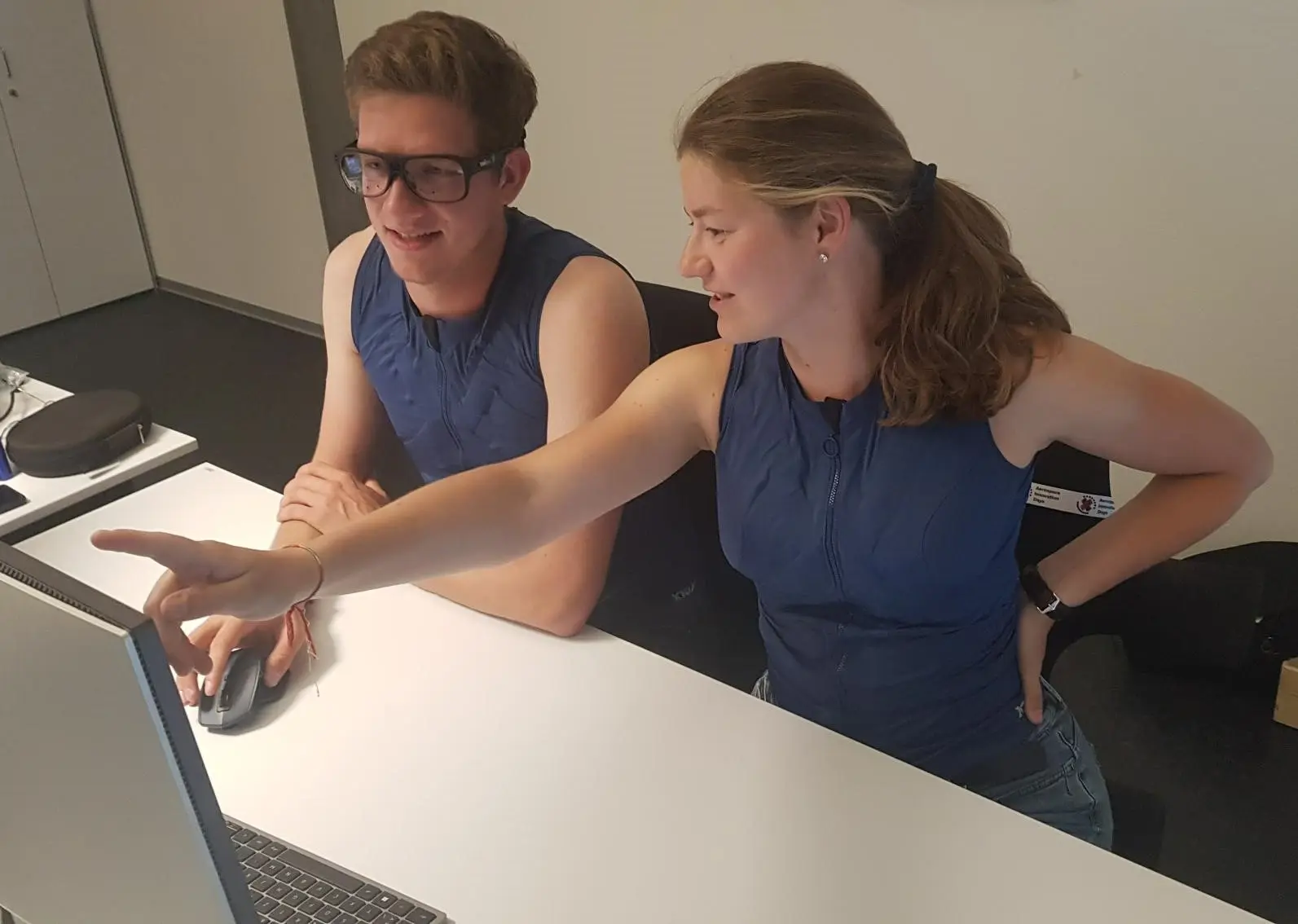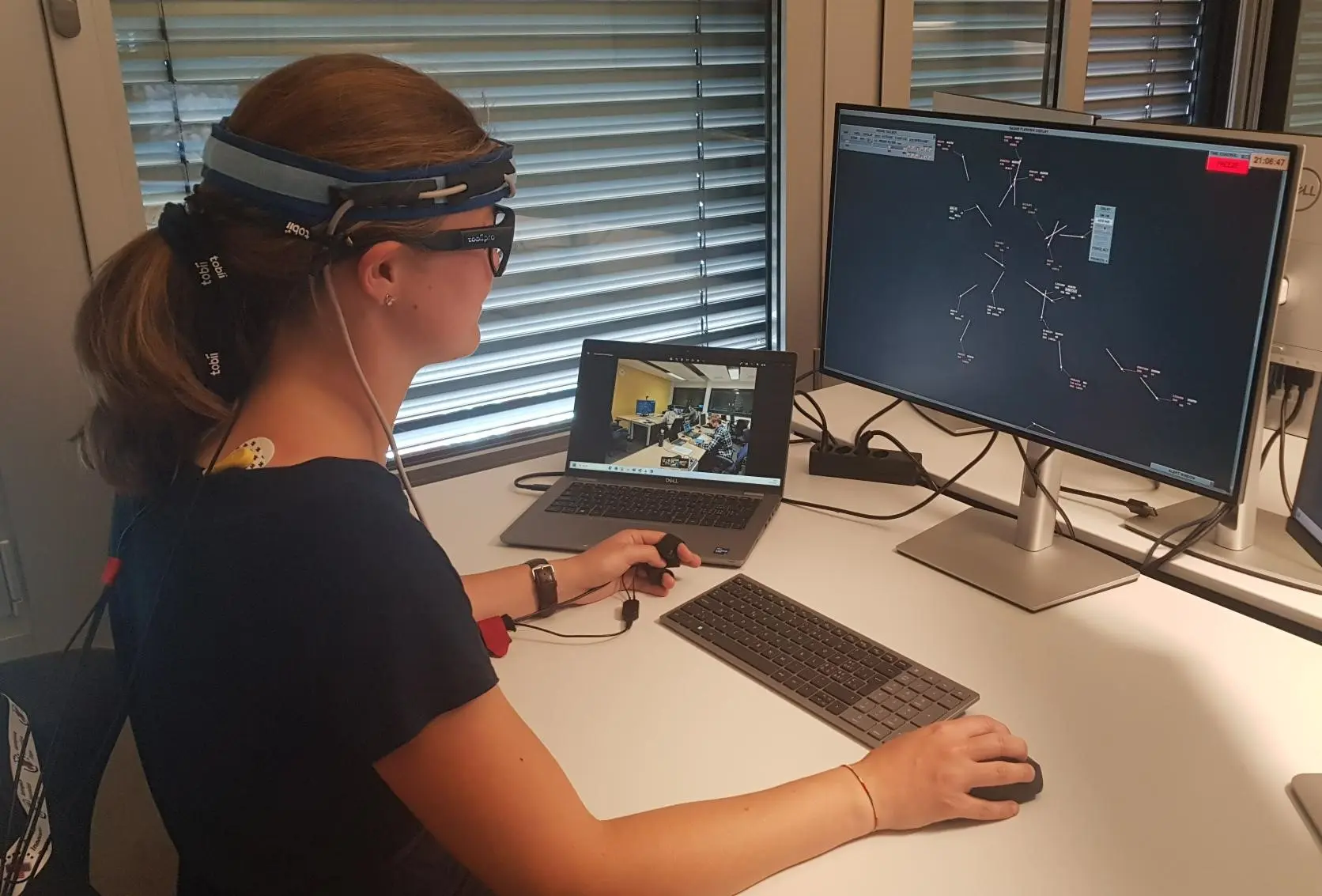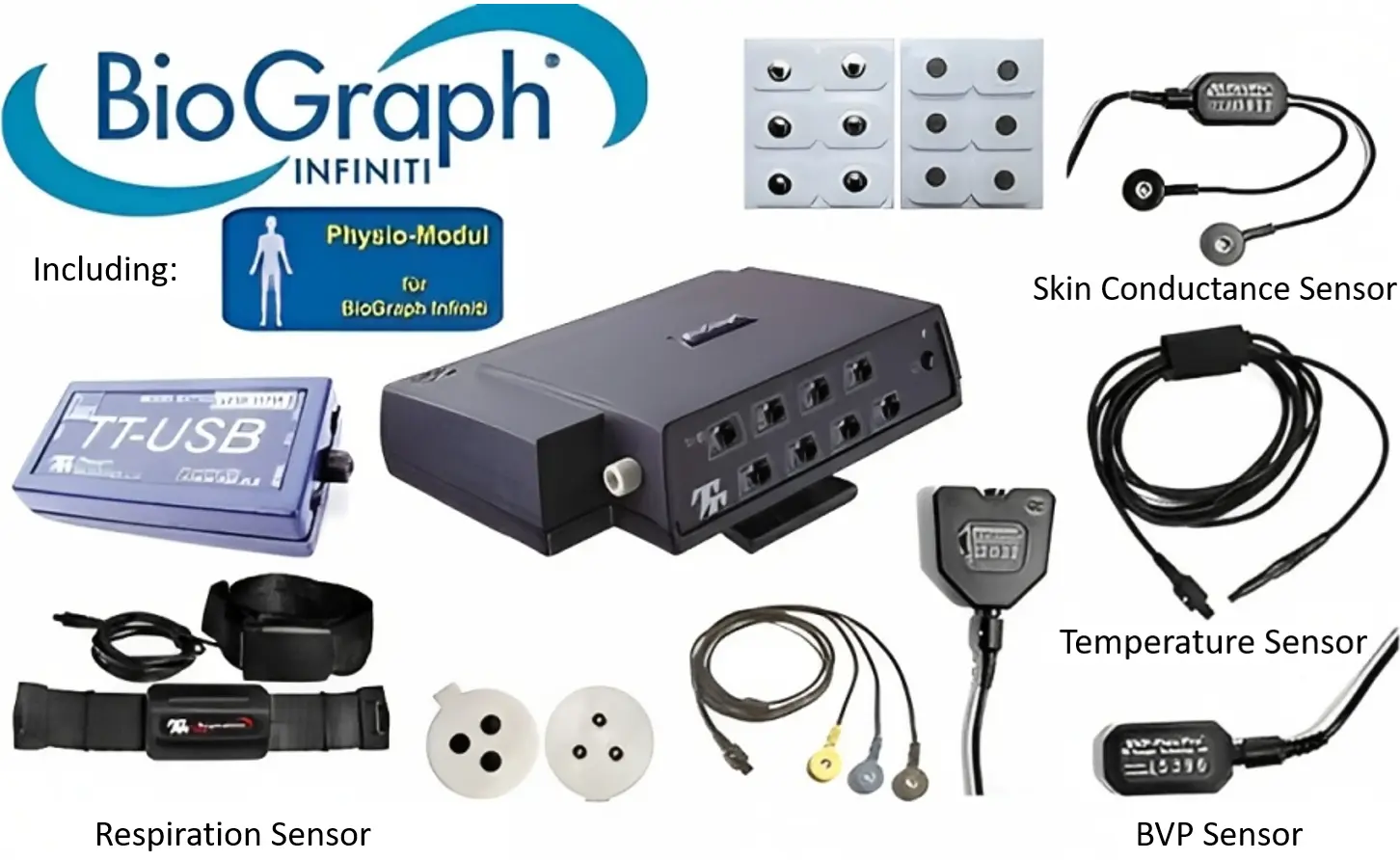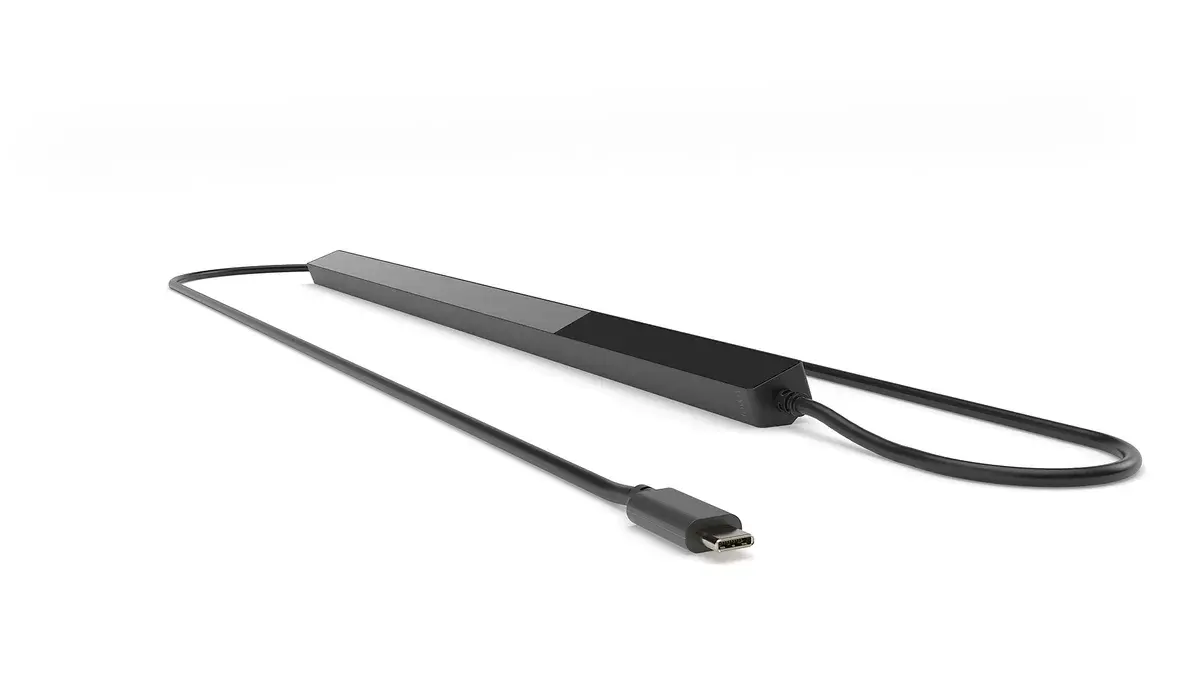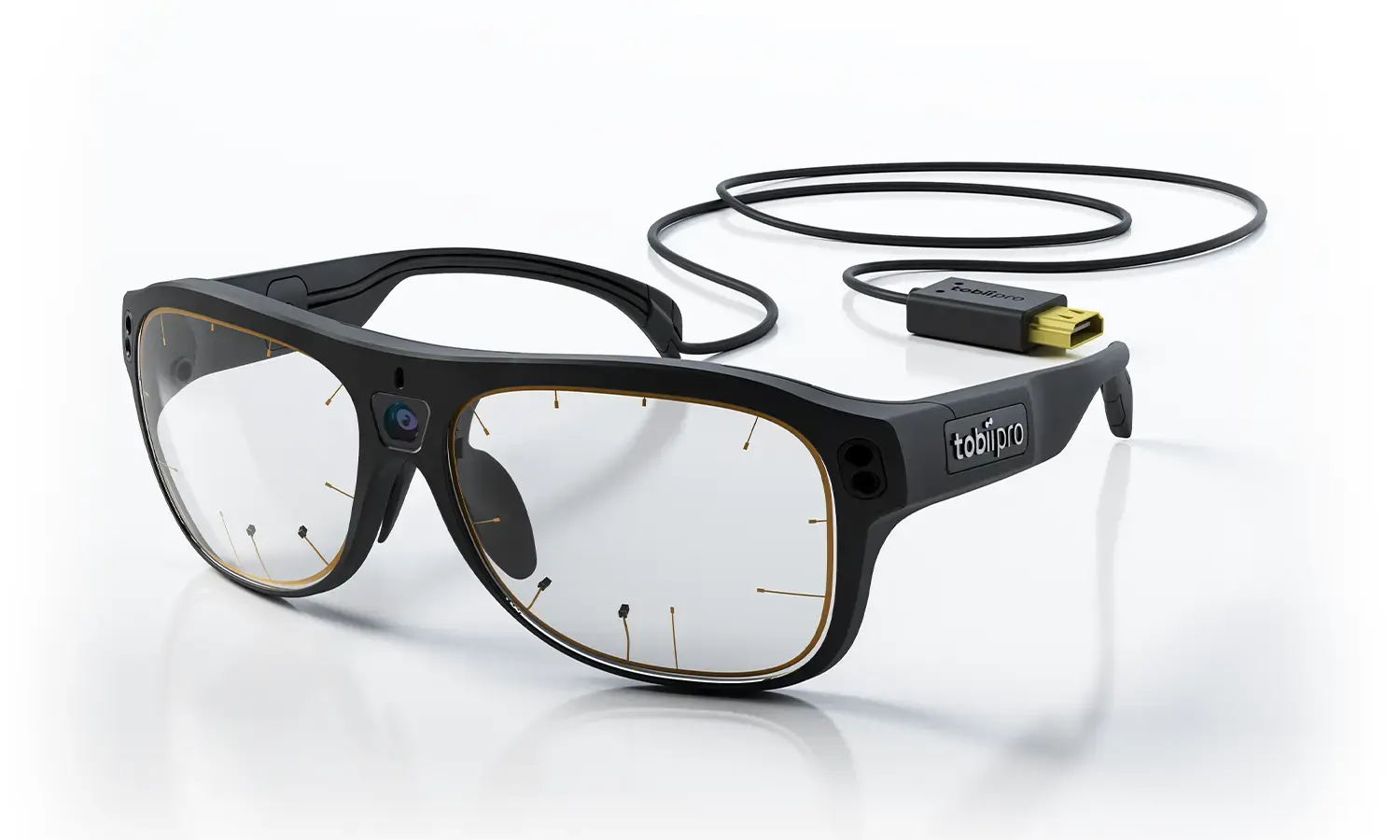Eye-Tracking Laboratory
Laboratory and System Description
Data from eye-tracking and psycho-physiological sensors are used in combination with simulator data to derive performance indices (e.g. for objective measurement of situation awareness, efficiency and effectiveness in task accomplishment), to monitor the state of the human operator (activation, workload, stress). Results are used to analyze personal competencies.
The eye-tracking laboratory consists of two devices. While the Tobii Pro Fusion Bar is used for screen-based measurements, the Tobii Pro Glasses 3 can be used for more dynamic settings in which the participant can move around freely. Both devices contain state-of-the-art eye-tracking technology and track the gaze and the pupil dilation in high data quality and tracking robustness. The data collected helps to understand a person’s focus of attention, workload, and stress. For biometric measurements two different devices can be used depending on the measurement environment. For stationary settings sensors from MediTech are used to collect various biometric parameters such as Electromyography (EMG), Respiration rate, blood volume pulse (BVP), heart rate, skin conductance and temperature and Hemoencephalography (HEG). In a dynamic setting a west (Healer R3 from LIFE) equipped with sensors can be used. The participant wearing the west can move around freely while ECG, respiration rate, blood oxygen saturation, body temperature and body movements are recorded. With these parameters an understanding of the activation of the sympathetic nervous system can be gained, which gives an insight into a person’s workload and stress level.
Applications
The eye-tracking and the biometric sensor devices are regularly used in combination as it gives a comprehensive and detailed insight into human workload and focus. The equipment is used for student projects and in the Human Factors class of the bachelor program in Aviation to give the students hands on experience in conducting scientific experiments. Furthermore, the devices are used in several research projects with partners from the industry (e.g. AISA or db EBT).
